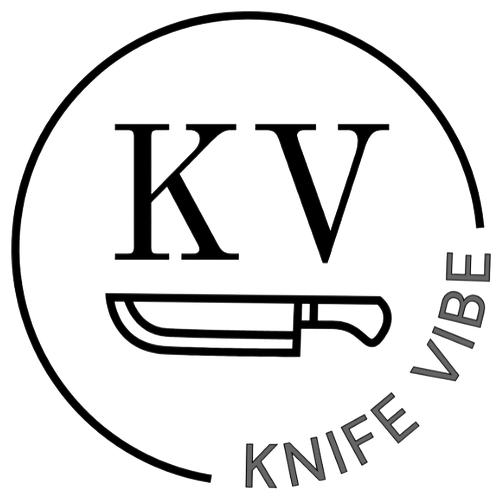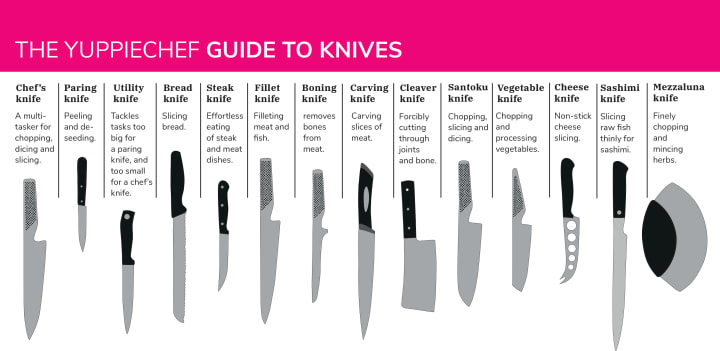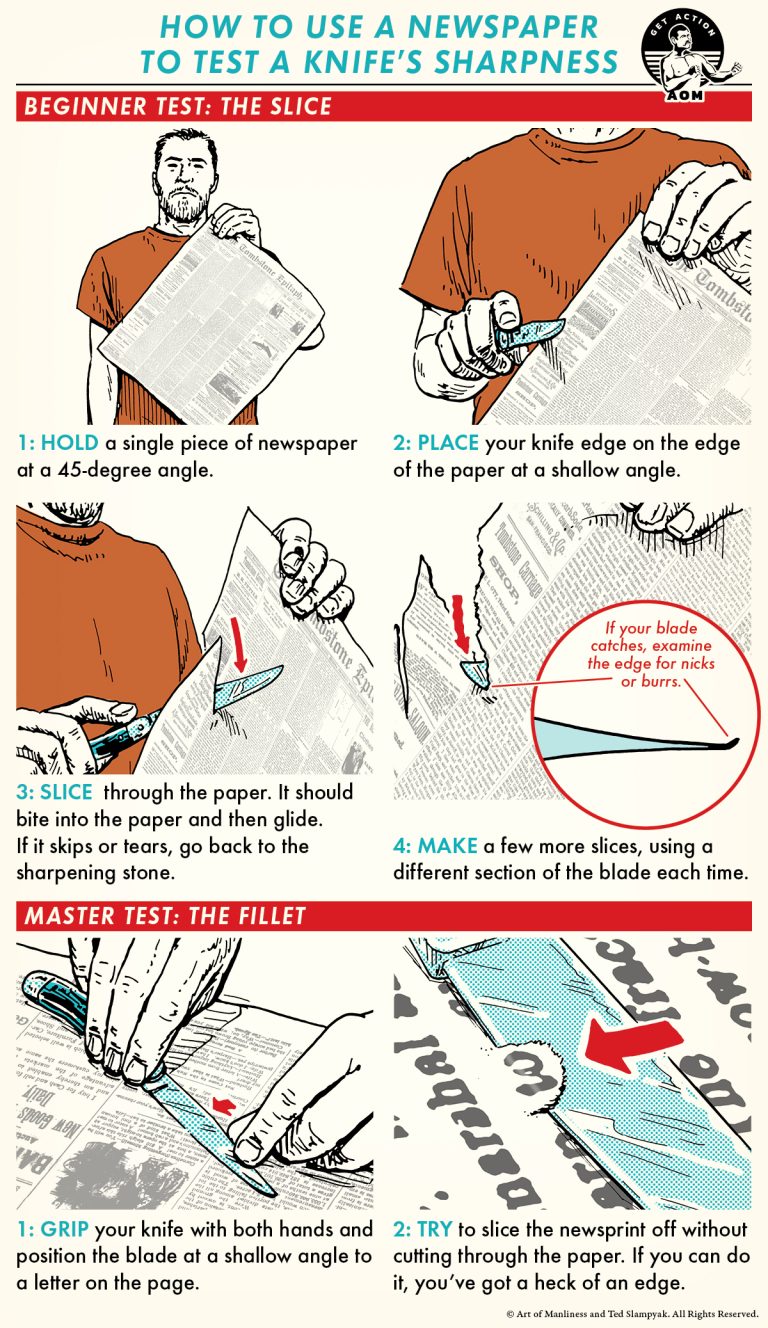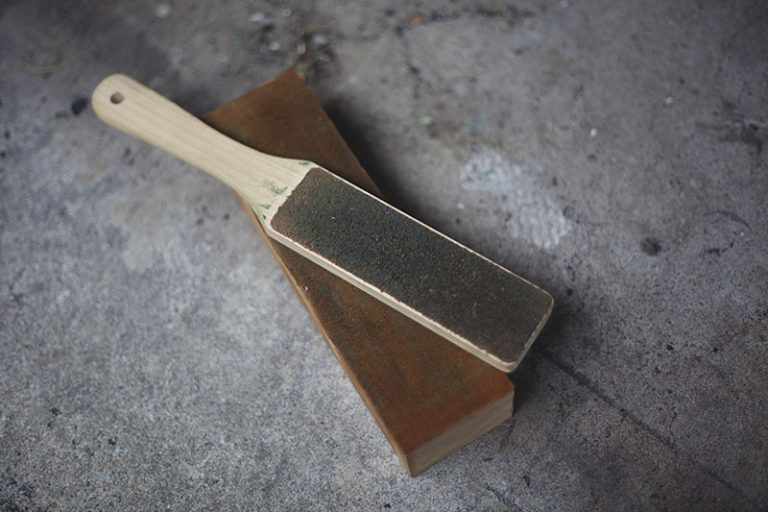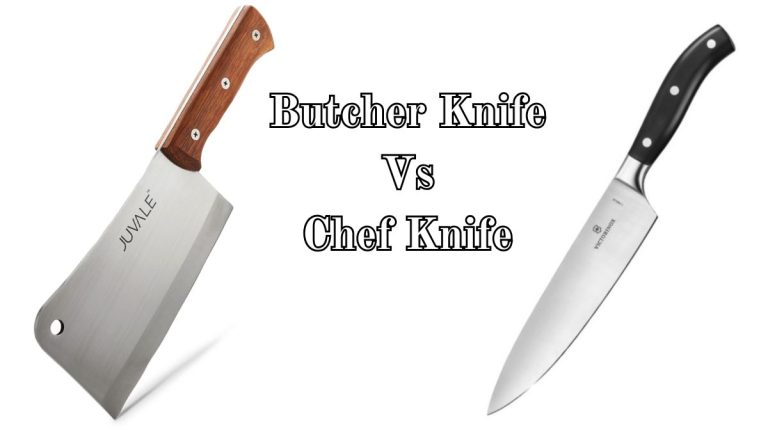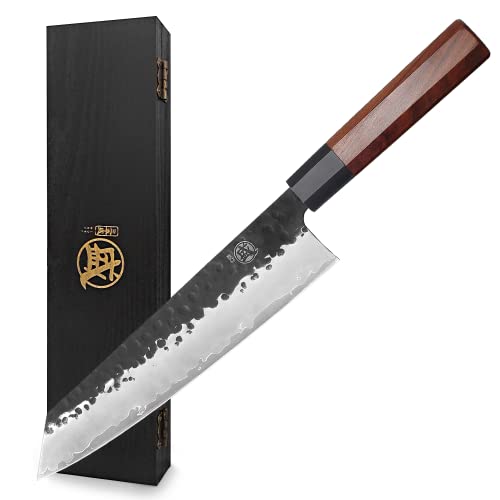Bread Knife Vs Carving Knife: Which One Should You Choose?
Choosing the right knife can make a big difference in your kitchen. Bread knives and carving knives each serve unique purposes.
Understanding the distinctions between these two types of knives can help you improve your culinary skills. Bread knives have serrated edges, perfect for slicing through crusty loaves without crushing the bread. Carving knives, on the other hand, are designed with long, thin blades to slice meats smoothly and precisely.
This comparison will highlight the features and uses of both knives, helping you decide which one suits your needs best. Whether you’re a home cook or a professional chef, knowing the right tool for the job is essential. Read on to discover the key differences and how they can enhance your cooking experience.
Bread Knife Features
A bread knife is a must-have for any kitchen. Its unique design sets it apart from other knives. Let’s explore the standout features of a bread knife.
Blade Design
The blade of a bread knife is usually long and serrated. This design allows it to cut through bread without crushing it. The serrations grip the crust and slice through the soft interior with ease.
Most bread knives have a blade length of 7 to 10 inches. The longer blade helps to make clean, even cuts. Some bread knives have a slightly curved blade. This curve makes it easier to slice through larger loaves.
The blade is typically made from stainless steel. This material is durable and resistant to rust. It also keeps a sharp edge for a long time.
Common Uses
Bread knives are not only for slicing bread. They can also be used for other foods with a hard exterior and soft interior.
- Bagels
- Tomatoes
- Pineapples
- Melons
These knives are great for cutting cakes too. The serrated edge makes it easy to cut through delicate cakes without smashing them.
In summary, bread knives are versatile and essential. Their unique design and various uses make them a valuable tool in any kitchen.
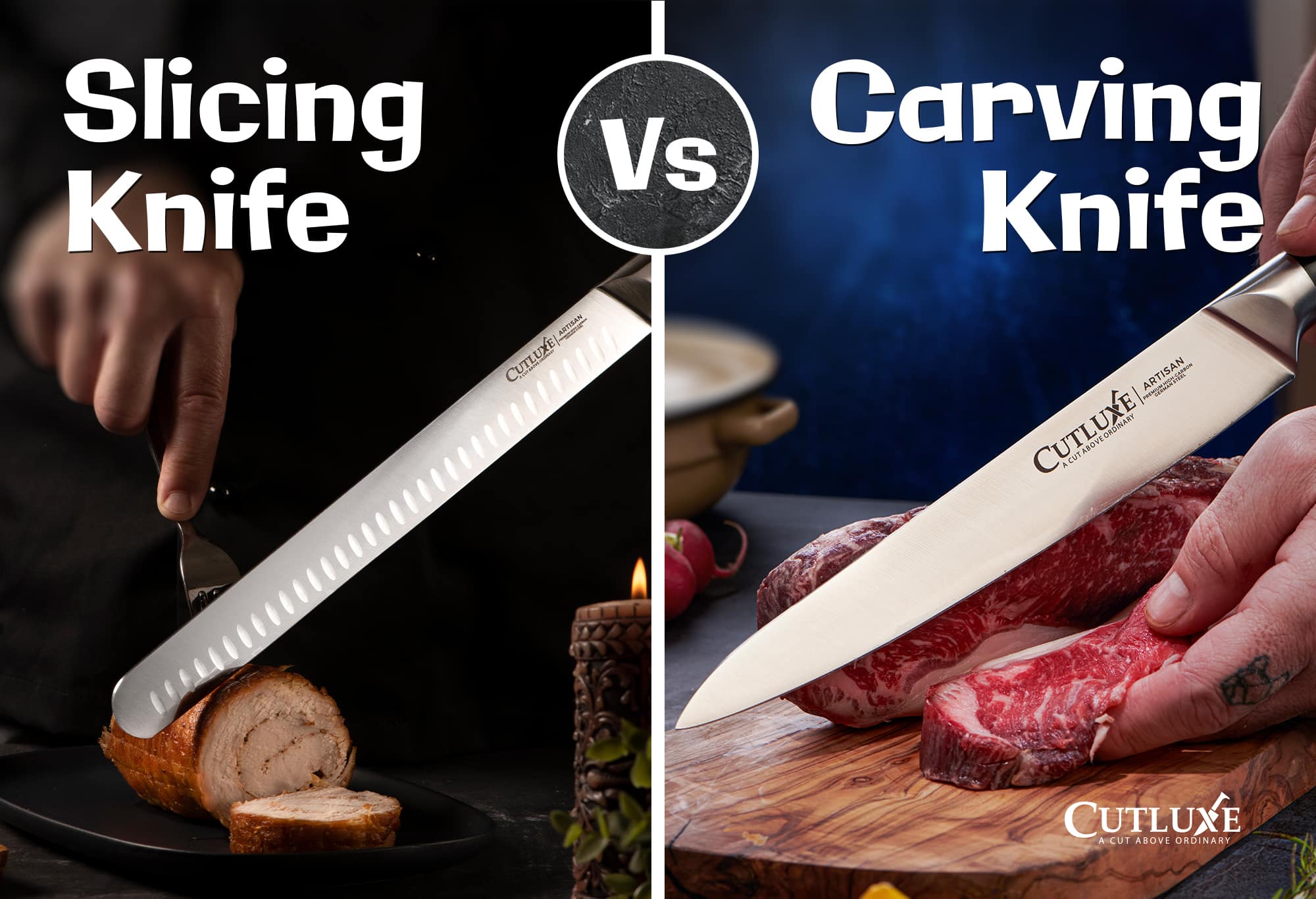
Credit: www.cutluxe.com
Carving Knife Features
A carving knife is a must-have in any kitchen. It is specifically designed for slicing cooked meat and poultry. Understanding its features can help you use it effectively.
Blade Design
The blade of a carving knife is usually long and thin. This design allows for precise cuts. The blade’s sharpness ensures smooth slicing. A pointed tip helps with intricate work. The blade is often made from stainless steel. This material resists rust and maintains sharpness.
| Feature | Details |
|---|---|
| Length | 8 to 15 inches |
| Material | Stainless Steel |
| Tip | Pointed |
Common Uses
A carving knife is versatile. It is perfect for slicing roasts, turkey, and ham. It can also slice large fruits and vegetables. The thin blade makes it easy to create thin slices. This is essential for serving meats.
- Slicing cooked meat
- Carving poultry
- Slicing large fruits
- Cutting vegetables
Using the right knife can make meal preparation easier. A carving knife’s design and features are tailored for specific tasks. This makes it an invaluable tool in the kitchen.
Key Differences
Understanding the key differences between a bread knife and a carving knife can help you choose the right tool for your kitchen. Both knives serve specific purposes and have unique features that set them apart. This section will delve into these differences to guide your decision-making process.
Blade Length
Bread knives usually have a blade length ranging from 8 to 10 inches. This length helps in slicing through large loaves of bread. Carving knives, on the other hand, typically have blades between 8 and 15 inches. The longer blade allows for smooth, even cuts of meat.
Serration Vs. Straight Edge
Bread knives come with serrated edges. The serrations help in cutting through crusty bread without crushing it. Carving knives feature straight edges. This straight edge ensures clean slices of meat, making it ideal for roasts and poultry.
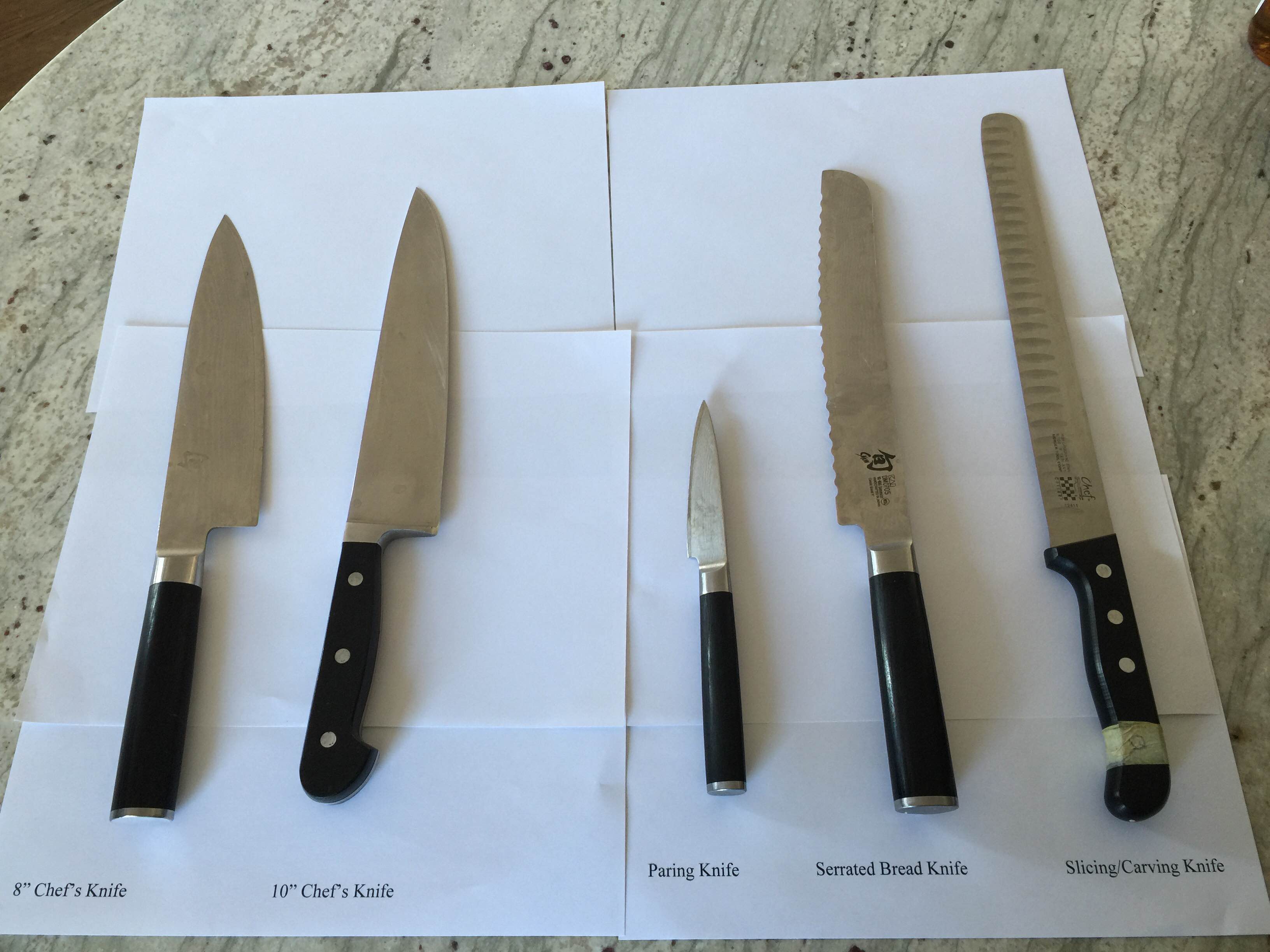
Credit: www.thechoppingblock.com
Performance Comparison
Choosing the right knife for your kitchen can be a challenge. Bread knives and carving knives both serve unique purposes. Here, we compare their performance in two key areas: cutting efficiency and ease of use.
Cutting Efficiency
Bread knives are designed with serrated blades. This feature makes them perfect for slicing through crusty bread. The serrations grip the bread’s surface. This prevents the knife from slipping.
In contrast, carving knives have long, straight blades. This design allows for smooth, precise cuts. They are ideal for slicing meats, such as turkey or roast beef. The smooth blade glides through the meat, ensuring even slices.
| Feature | Bread Knife | Carving Knife |
|---|---|---|
| Blade Type | Serrated | Straight |
| Best For | Bread | Meat |
| Performance | Grips and slices crusty surfaces | Glides through meat smoothly |
Ease Of Use
Using a bread knife is simple. The serrated blade does most of the work. You only need gentle pressure to cut through bread. This makes it user-friendly for all skill levels.
A carving knife requires more control. Precision is key when slicing meats. The straight blade demands a steady hand. This may be challenging for beginners.
- Bread Knife – Easy for all users, minimal effort needed.
- Carving Knife – Requires skill and steady hand for best results.
In summary, both knives have their strengths. Choose based on your needs and skill level.
Material And Durability
Choosing the right knife for your kitchen can be tricky. Material and durability are important factors to consider. Bread knives and carving knives have different materials and durability. Let’s explore these aspects in detail.
Blade Material
The blade material greatly affects a knife’s performance. Bread knives often have stainless steel blades. Stainless steel resists rust and corrosion. This makes it ideal for cutting through tough bread crusts.
Carving knives, on the other hand, might use high-carbon steel. High-carbon steel blades are sharper and hold their edge longer. They are perfect for precise slicing of meats.
| Knife Type | Blade Material | Key Features |
|---|---|---|
| Bread Knife | Stainless Steel | Resistant to rust and corrosion |
| Carving Knife | High-Carbon Steel | Sharper, holds edge longer |
Handle Material
The handle material also impacts the knife’s durability and comfort. Bread knives usually have plastic or composite handles. These materials are lightweight and easy to clean. They provide a good grip even when wet.
Carving knives often feature wooden handles. Wood offers a comfortable grip and a classic look. It may require more care to prevent damage from moisture.
- Bread Knife: Plastic or composite handles
- Carving Knife: Wooden handles
Consider both blade and handle materials. They influence the knife’s durability and performance.

Credit: www.foodbeast.com
Care And Maintenance
Proper care and maintenance are crucial for the longevity of your bread and carving knives. Keeping your blades in top shape ensures smooth slicing and enhances safety. Let’s dive into the essential tips for cleaning and sharpening both types of knives.
Cleaning Tips
Cleaning your bread knife and carving knife properly is essential. Here are some tips:
- Wash your knives by hand with warm, soapy water.
- Dry them immediately with a clean towel.
- Avoid using a dishwasher; it can damage the blades.
- Store knives in a knife block or on a magnetic strip.
Sharpening Guidelines
Both bread knives and carving knives need regular sharpening. Follow these guidelines:
- Use a sharpening stone or a knife sharpener.
- For bread knives, focus on sharpening the serrated edges.
- Sharpen carving knives with a consistent angle along the blade.
- Hone your knives regularly to maintain their edge.
Here’s a quick comparison table for reference:
| Aspect | Bread Knife | Carving Knife |
|---|---|---|
| Cleaning | Hand wash, no dishwasher | Hand wash, no dishwasher |
| Sharpening | Serrated edges | Consistent angle |
| Storage | Knife block or magnetic strip | Knife block or magnetic strip |
Choosing The Right Knife For You
When you need to pick between a bread knife and a carving knife, it can be tricky. Both knives serve different purposes, and choosing the right one can make your kitchen tasks easier. Let’s explore what makes each knife unique and how to choose the best one for your needs.
Personal Preferences
Every cook has their preferences. Consider what you use your knives for most. A bread knife has a serrated edge. It is perfect for slicing bread without crushing it. The blade is long and thin. It also works well for cutting tomatoes and other soft items.
A carving knife, on the other hand, has a straight, thin blade. It is ideal for slicing meats like turkey or roast beef. If you often prepare large cuts of meat, this knife is essential. Its design allows for smooth, even slices.
Specific Needs
| Type of Knife | Best For |
|---|---|
| Bread Knife | Bread, Tomatoes, Soft Items |
| Carving Knife | Meats, Poultry, Fish |
Think about your specific needs. Do you bake bread often? A bread knife should be your choice. Are you the host of family dinners with roasted meats? Then a carving knife is a must-have.
Here are some quick tips to help you decide:
- For daily bread slicing, choose a bread knife.
- For carving roasts, opt for a carving knife.
- If you need to slice both bread and meat, consider getting both.
Remember, the best knife is the one that fits your cooking style and needs. Keep your preferences and specific tasks in mind. Happy cooking!
Frequently Asked Questions
What Is A Bread Knife Used For?
A bread knife is used for slicing bread. Its serrated edge helps cut through crusts without crushing the soft interior.
What Is A Carving Knife Used For?
A carving knife is used for slicing meat. Its long, thin blade ensures precise, smooth cuts of cooked meats and poultry.
Can You Use A Bread Knife To Carve Meat?
A bread knife is not ideal for carving meat. Its serrated edge can tear the meat, making it less effective.
What Are The Differences Between A Bread Knife And A Carving Knife?
A bread knife has a serrated edge for cutting bread. A carving knife has a long, thin blade for slicing meat.
Conclusion
Choosing the right knife makes a big difference in your kitchen. Bread knives are perfect for slicing bread without crushing it. Carving knives excel at cutting meat with precision. Each knife serves a unique purpose. Understanding their uses helps improve your cooking.
Invest in quality knives for better results. Happy cooking and slicing!
